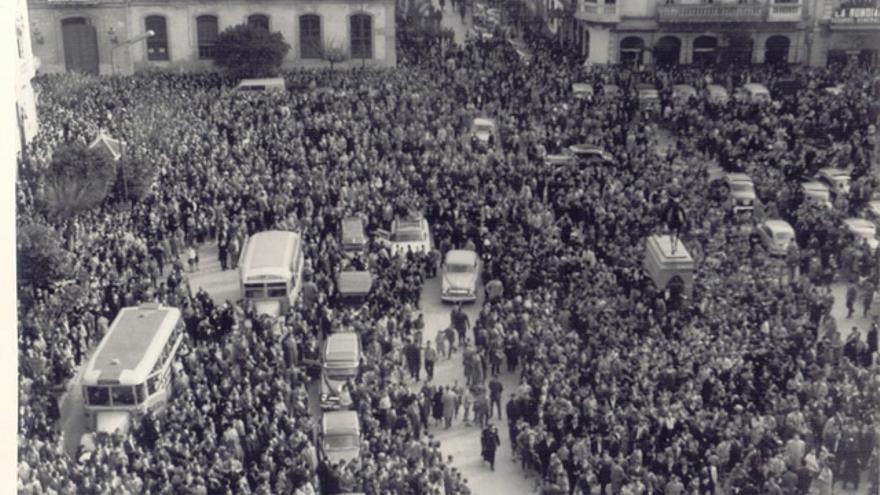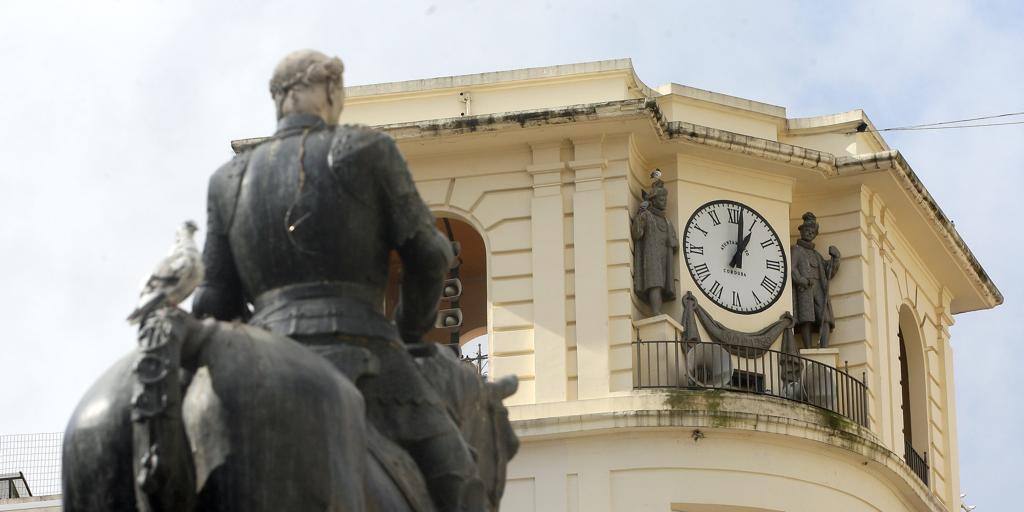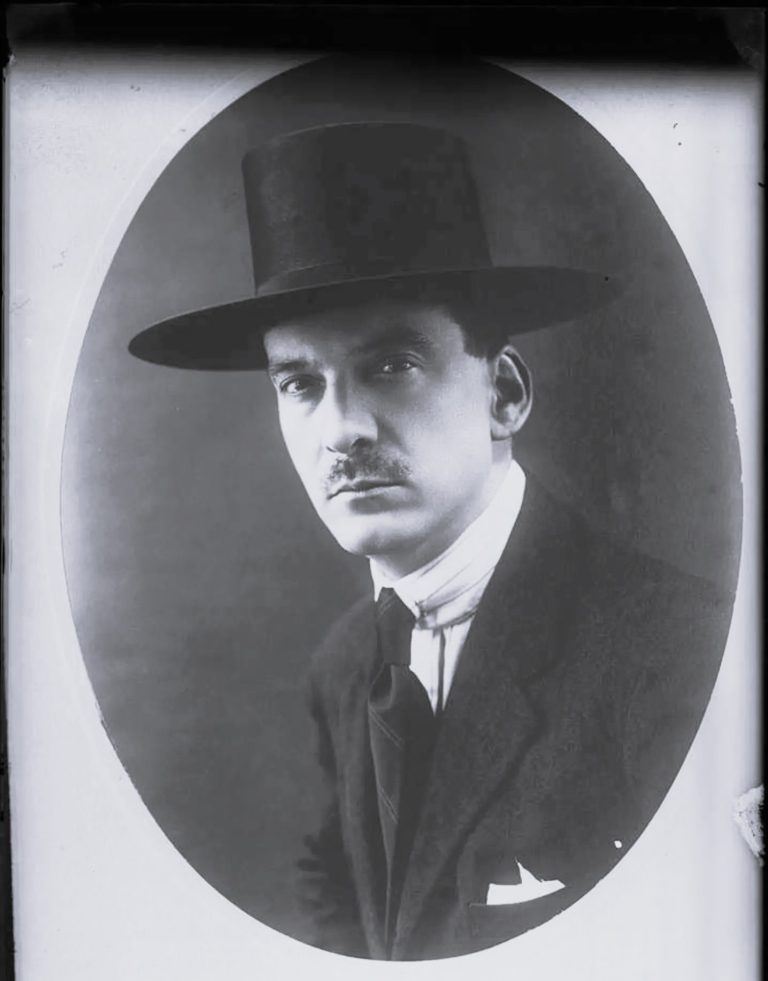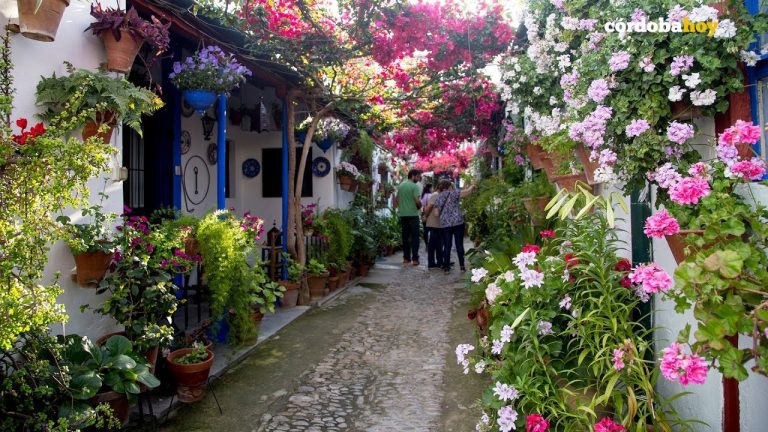Clock of Las Tendillas
History of the Flamenco Clock
“World’s only clock that tells the time with the sound of a guitar”
At 12 o’clock noon in the year 1961, schools in the downtown area, such as La Trinidad, allowed children to leave an hour early from class to attend a major event: the inauguration by Mayor D. Antonio Cruz Conde of the brand new clock dial, with the radio voice of D. Matías Prats and sponsored by Philips, under the slogan: ‘There’s nothing better. That morning the anticipation was maximum, and there wasn’t room for a pin in Gran Capitán Square.

But it all began to take shape four years earlier when the old clock located in the turret of the building at the intersection of Jesús María Street and Málaga Street started to have problems. It was only operational for a few decades (1929-1945) and was a symbol for the people of Córdoba, who in the 1930s celebrated the New Year’s arrival to the rhythm of its chimes. In fact, it was inaugurated by the Tienda clockmaker’s shop on New Year’s Eve of 1929, with the distribution of 4,000 bags containing the 12 grapes. Until the year 1945, this old device was illuminated, but soon its machinery wore out.
1958 – Given the difficulties with the ownership of the clock, the repair process is halted until the issues are resolved. It wouldn’t be until two years later when the owner, Miguel Pérez Muñoz, as the owner of the two houses located in Las Tendillas between Málaga Street and Gondomar Street, requested permission from the City Council to equalize the height of the two buildings, for the better adornment of the square, and voluntarily provided the land and access for the installation of a tower clock, with the sole condition that… “it wouldn’t make noise at night.”
he City Council accepted the proposal of this resident of Las Tendillas and chose the elevated area, at the corner with Gondomar, to place it.
It was on June 13, 1960, when the head of the propaganda department of Philips Iberia SAE, Antonio Manzanares, donated to the City Council the tower clock with electronic Carrión equipped with devices from Philips with a luminous dial activated by a sidereal clock
The novelty and uniqueness of this machinery was that the hours and half-hours would be signaled by guitar strokes, more specifically, by soleá and seguirillas. The cost of installing the clock amounted to 41,273 pesetas, while the construction of the tower itself increased the bill by another 103,850 pesetas.
The big day was January 29, 1961, when for the first time the flamenco guitar chords of Juan Serrano sounded every quarter and every hour. Since then, the clock has never stopped working





